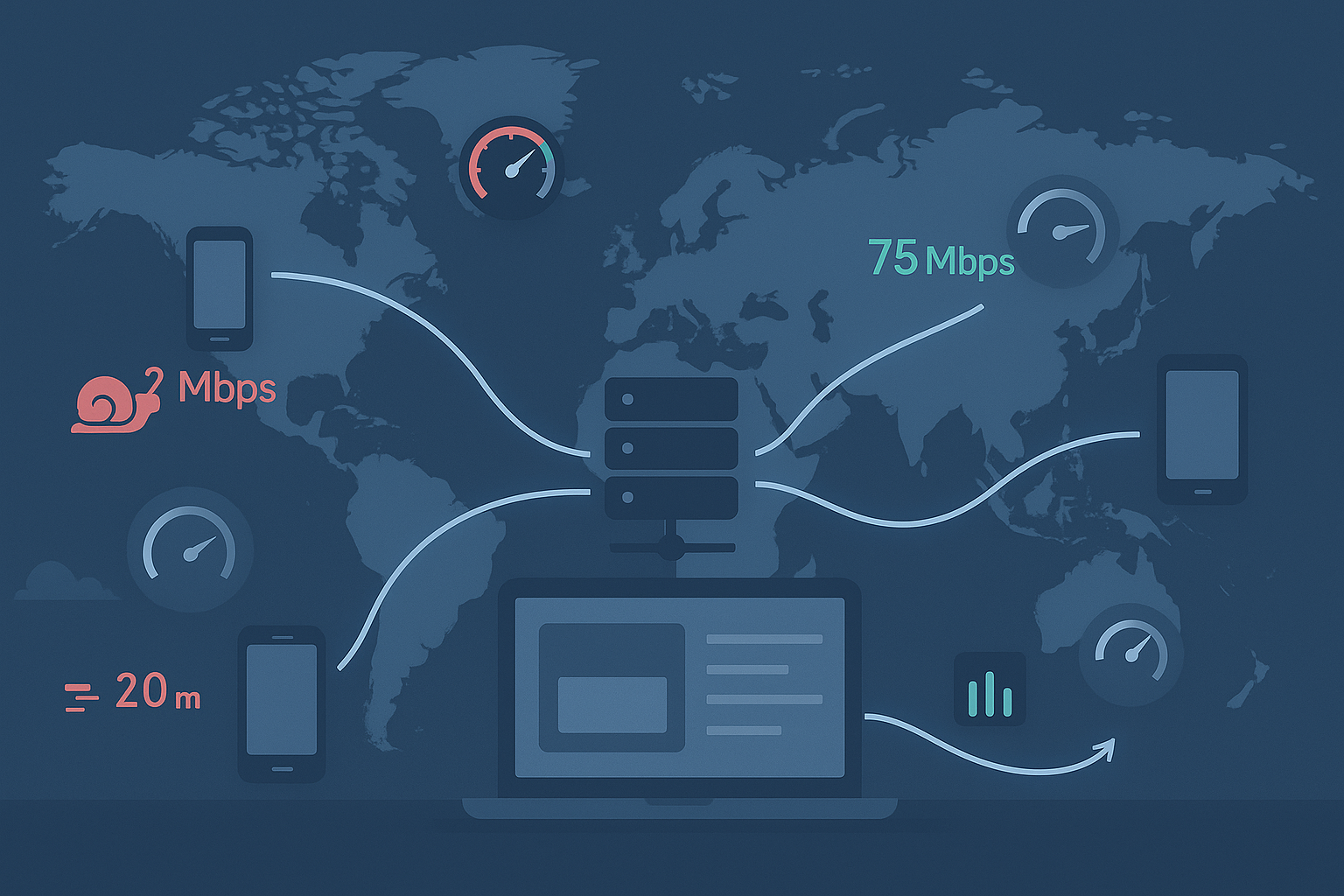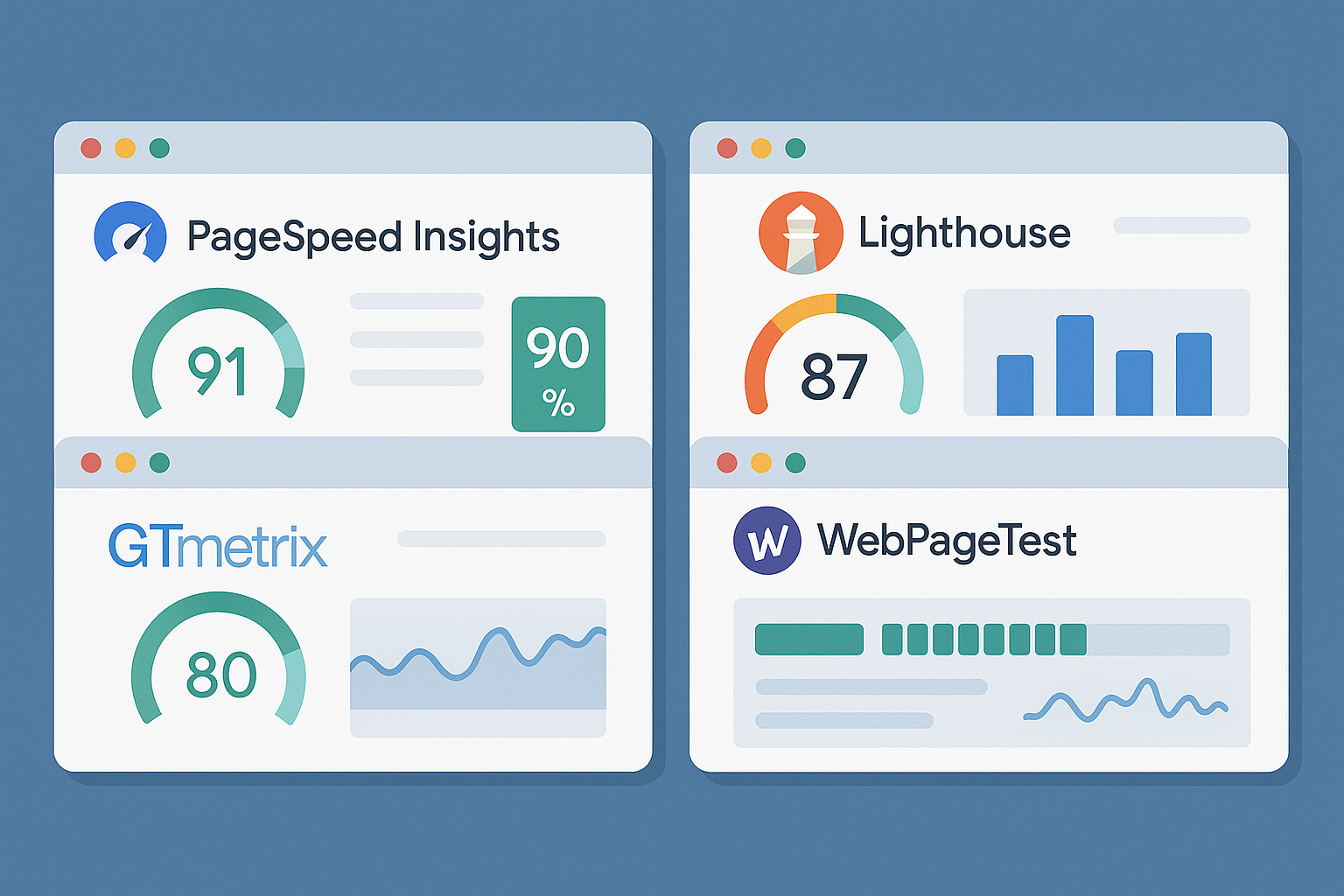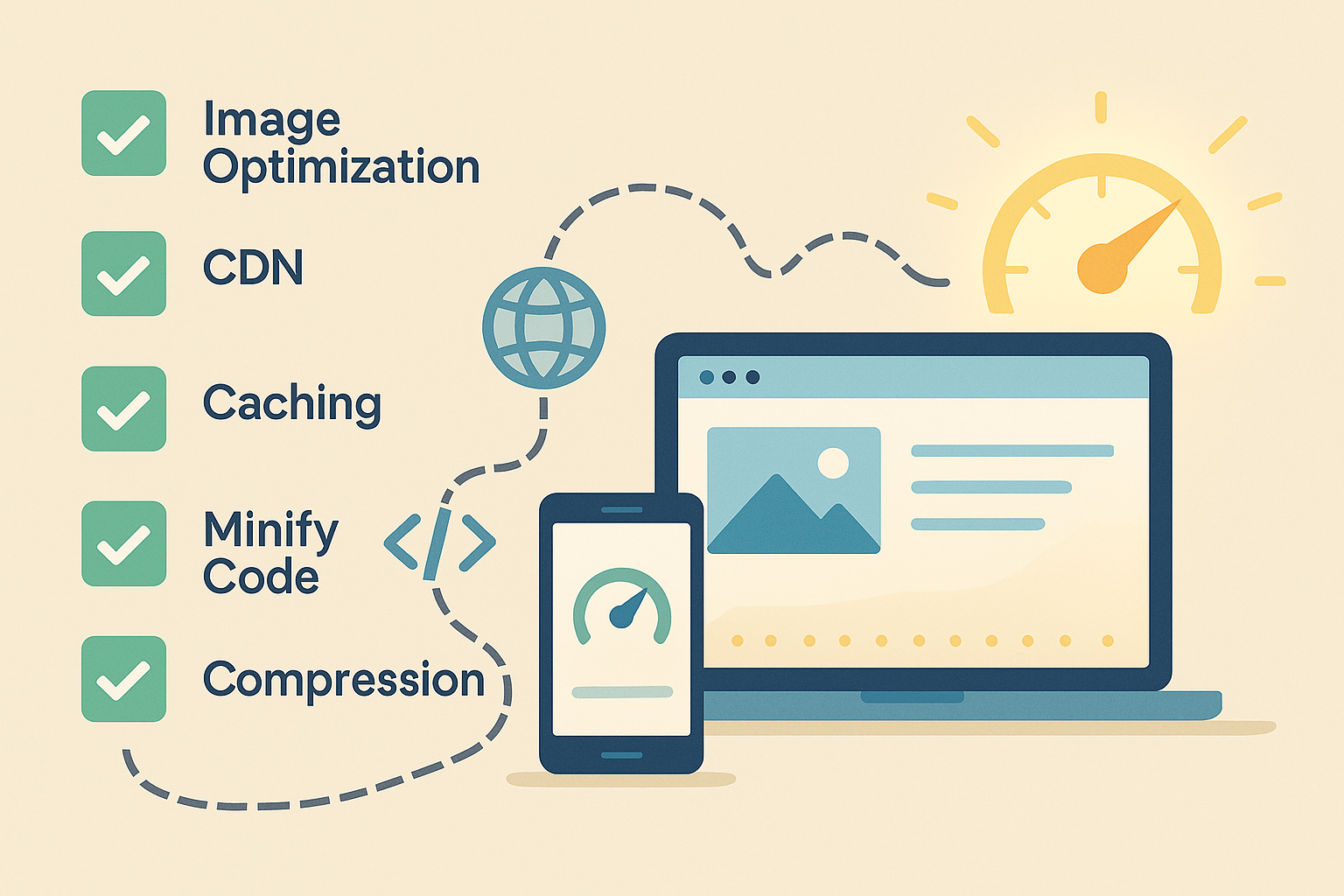
How to check website speed?

Ensuring your website loads quickly is crucial for providing a positive user experience and improving your site's performance in search engine rankings. This guide walks you through the process of testing your website's speed, understanding the factors that affect it, and utilizing various tools to gain comprehensive insights.
Step-by-Step Guide to Testing Website Speed
1. Choose a Reliable Speed Testing Tool
Selecting the right tool is the first step in accurately measuring your website's speed. Some popular options include:
- WebPageTest: Offers detailed insights and allows you to test from different locations and devices.
- Google PageSpeed Insights: Provides performance scores and suggestions for improvement.
- Pingdom: User-friendly interface with comprehensive performance metrics.
- GTmetrix: Combines data from Google PageSpeed and YSlow for in-depth analysis.
2. Configure Test Settings Appropriately
To obtain meaningful results, configure your tests to reflect real-world user conditions:
- Test Location: Choose a server location close to your target audience.
- Connection Speed: Simulate the typical internet speed of your users (e.g., 3G, 4G, broadband).
- Device Type: Test on devices commonly used by your audience (e.g., mobile, desktop).
3. Run Multiple Tests
Conduct several tests at different times and configurations to account for variability and obtain a comprehensive view of your website's performance.
4. Test Various Pages
Don't limit your testing to the homepage. Evaluate other critical pages such as:
- Product Pages: Where conversions happen.
- Checkout Pages: Crucial for e-commerce sites.
- Blog Posts: Often entry points for organic traffic.

Understanding Factors Affecting Test Results
Geographic Location
The physical distance between the user and your server can impact load times. Testing from multiple locations helps identify performance issues for different user segments.
Connection Speed
Users with slower internet connections will experience longer load times. Simulating various connection speeds provides insights into performance across different user scenarios.
Device Performance
Older or less powerful devices may struggle with resource-intensive websites. Testing on a range of devices ensures your site performs well for all users.

Recommended Website Speed Testing Tools
1. Website Performance Grader
Overview: A free tool available from multiple web performance platforms that evaluates your website's speed, SEO, mobile optimization, and security.
Features:
- Provides a comprehensive performance score.
- Offers actionable recommendations for improvement.
- User-friendly interface suitable for beginners.
Ideal For: Users seeking an all-in-one assessment of their website's health.
2. WebPageTest
Overview: An advanced tool that allows for detailed performance testing with customizable settings.
Features:
- Test from multiple locations and devices.
- Simulate various connection speeds.
- Detailed waterfall charts and filmstrip views.
Ideal For: Developers and technical users requiring in-depth analysis.
3. Google PageSpeed Insights
Overview: Google's tool that analyzes the content of a web page and generates suggestions to make it faster.
Features:
- Provides separate scores for mobile and desktop.
- Offers specific recommendations for improvement.
- Integrates with Google's Core Web Vitals.
Ideal For: Users focused on optimizing for Google's performance standards.
4. Pingdom
Overview: A user-friendly tool that provides insights into website performance and uptime.
Features:
- Performance grades based on various metrics.
- Visual representation of load times.
- Historical data tracking.
Ideal For: Users seeking an easy-to-understand overview of website performance.
5. GTmetrix
Overview: Combines data from Google PageSpeed and YSlow to provide comprehensive performance reports.
Features:
- Detailed analysis of page load components.
- Recommendations for optimization.
- Ability to test from different regions.
Ideal For: Users looking for a balance between depth and usability.
6. Uptrends
Overview: Offers website performance and uptime monitoring from various global locations.
Features:
- Tests across multiple browsers and devices.
- Provides detailed performance reports.
- Alerts for downtime and performance issues.
Ideal For: Businesses needing continuous monitoring of website performance.

Tips for Improving Website Speed
- Optimize Images: Compress and resize images without compromising quality.
- Minify CSS, JavaScript, and HTML: Remove unnecessary characters to reduce file sizes.
- Leverage Browser Caching: Store frequently accessed resources locally in the user's browser.
- Use a Content Delivery Network (CDN): Distribute content across multiple servers to reduce latency.
- Reduce HTTP Requests: Limit the number of elements on a page to decrease load times.
- Enable Compression: Use Gzip or Brotli to compress files sent from the server to the browser.
- Optimize Server Response Time: Choose a reliable hosting provider and consider upgrading your server resources if necessary.
Conclusion
Regularly testing and optimizing your website's speed is essential for providing a positive user experience and maintaining strong search engine rankings. By utilizing the right tools and implementing best practices, you can



